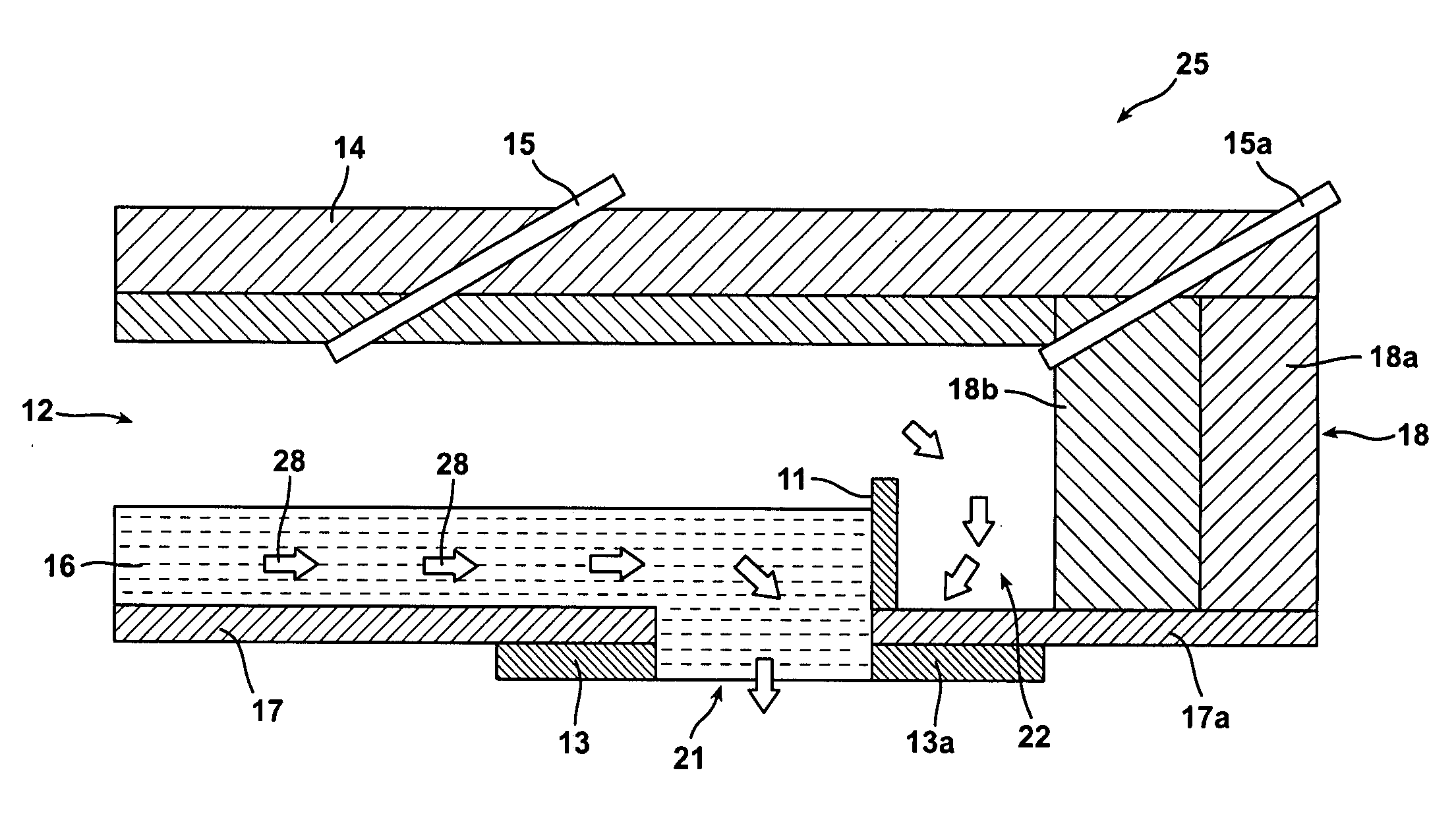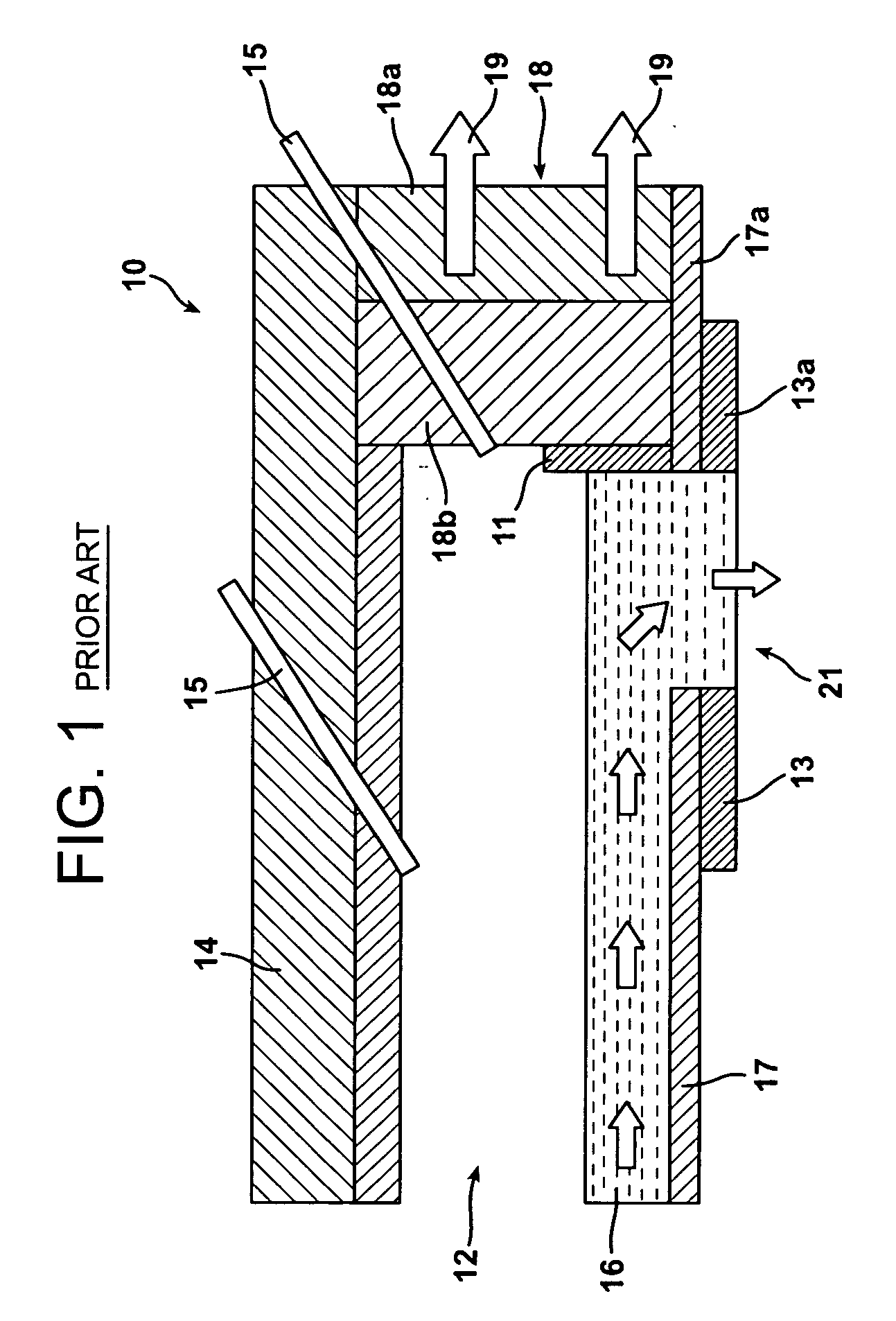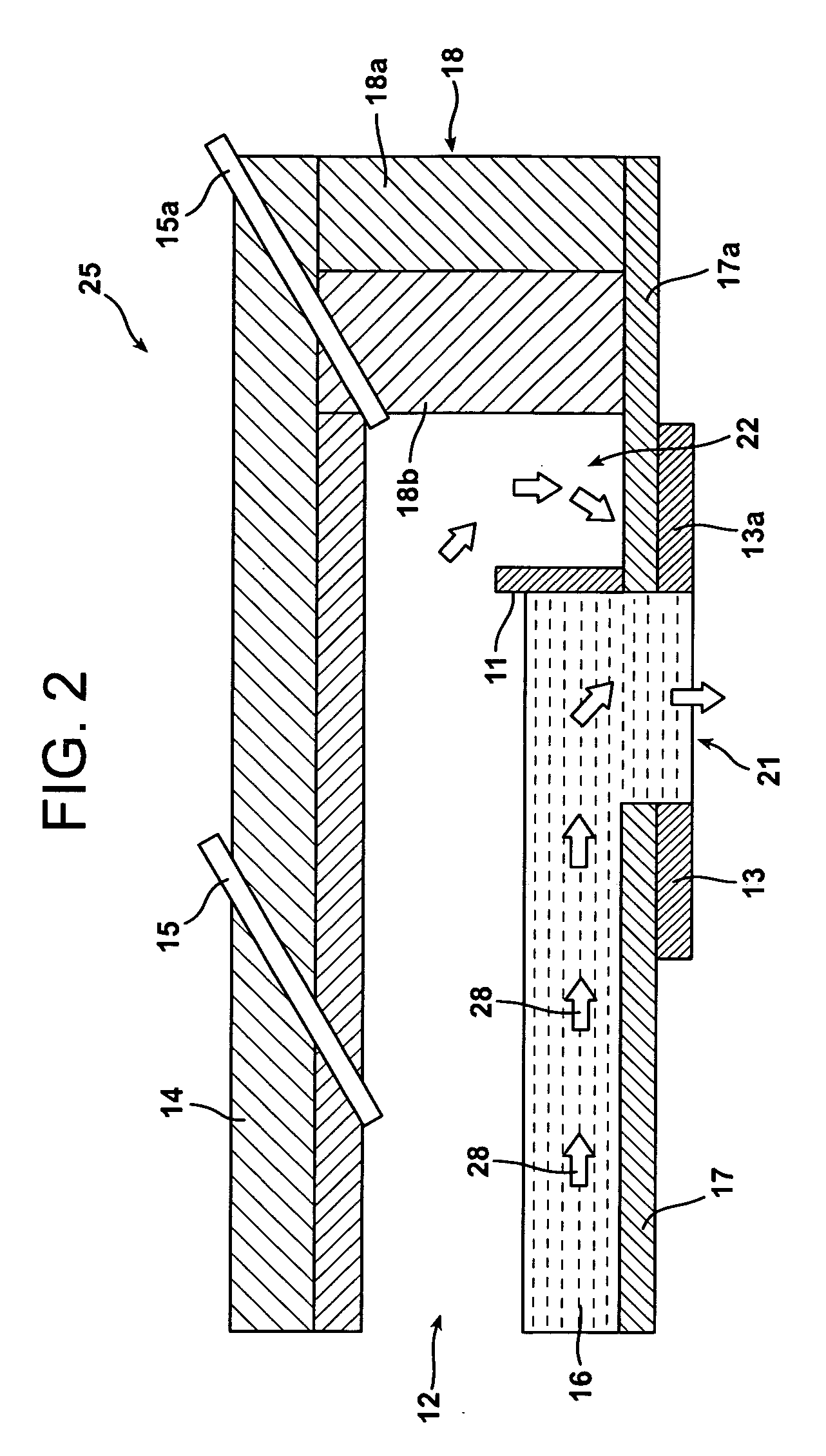Apparatuses and methods for controlling the temperature of glass forming materials in forehearths
a technology of glass fiber forming apparatus and temperature control, which is applied in the direction of lighting and heating apparatus, manufacturing tools, furniture, etc., can solve the problems of reducing the residence time and the volume of molten glass, and achieve uniform or substantially uniform chemical and physical properties of glass fibers, reduce shear break rate, and more homogeneous viscosity
- Summary
- Abstract
- Description
- Claims
- Application Information
AI Technical Summary
Benefits of technology
Problems solved by technology
Method used
Image
Examples
Embodiment Construction
[0028]Unless defined otherwise, all technical and scientific terms used herein have the same meaning as commonly understood by one of ordinary skill in the art to which the invention belongs. Although any methods and materials similar or equivalent to those described herein can be used in the practice or testing of the present invention, the preferred methods and materials are described herein. All references cited herein, including published or corresponding U.S. or foreign patent applications, issued U.S. or foreign patents, and any other references, are each incorporated by reference in their entireties, including all data, tables, figures, and text presented in the cited references.
[0029]In the drawings, the thickness of the lines, layers, and regions may be exaggerated for clarity. It is to be noted that like numbers found throughout the figures denote like elements. It will be understood that when an element is referred to as being “on,” another element, it can be directly on ...
PUM
| Property | Measurement | Unit |
|---|---|---|
| Temperature | aaaaa | aaaaa |
| Distance | aaaaa | aaaaa |
| Distance | aaaaa | aaaaa |
Abstract
Description
Claims
Application Information
 Login to View More
Login to View More - R&D
- Intellectual Property
- Life Sciences
- Materials
- Tech Scout
- Unparalleled Data Quality
- Higher Quality Content
- 60% Fewer Hallucinations
Browse by: Latest US Patents, China's latest patents, Technical Efficacy Thesaurus, Application Domain, Technology Topic, Popular Technical Reports.
© 2025 PatSnap. All rights reserved.Legal|Privacy policy|Modern Slavery Act Transparency Statement|Sitemap|About US| Contact US: help@patsnap.com



